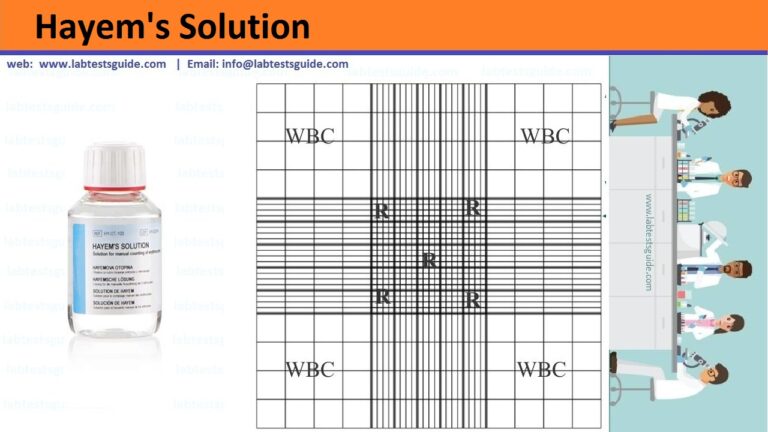Diacetyl Monoxime is a chemical reagent often used in biochemical assays and laboratory procedures, particularly in the determination of urea in biological samples like blood or urine. It reacts with urea in the presence of an acid to produce a yellow-colored complex, which can then be measured spectrophotometrically. This method is widely used in clinical laboratories for urea determination due to its specificity and relatively simple procedure.

Uses of Diacetyl Monoxime:
- Urea Determination (BUN Test): Diacetyl Monoxime is commonly used in the biochemical analysis of blood and urine to measure urea levels, helping in the assessment of kidney function.
- Protein Quantification: It is employed in assays to determine the presence of proteins by reacting with urea derived from protein breakdown.
- Enzymatic Studies: Used in the study of urease activity, as it helps measure the breakdown of urea by the enzyme, aiding in research and diagnostics.
- Chemical Synthesis: Utilized as an intermediate in organic synthesis for producing various chemical compounds.
- Research Applications: Used in various research studies involving nitrogen metabolism, providing insights into physiological and pathological processes.
Composition of Diacetyl Monoxime:
| Component | Quantity |
|---|---|
| Diacetyl Monoxime | 4 g |
| Distilled Water | to make up to 1000 ml |
This composition is typically used in preparing a working solution for various biochemical assays, particularly for urea determination. Ensure the Diacetyl Monoxime is fully dissolved in the distilled water before using the solution in any procedure.
Preparation of Diacetyl Monoxime:
- Weigh the Diacetyl Monoxime: Accurately weigh 4 g of Diacetyl Monoxime and transfer it into a 500 ml volumetric flask.
- Dissolve in Water: Half fill the flask with distilled water and mix thoroughly until the Diacetyl Monoxime is completely dissolved.
- Adjust Volume: Add more distilled water to the flask until the total volume reaches the 500 ml mark. Mix well to ensure homogeneity.
- Transfer and Store: Pour the solution into a leak-proof bottle. Label the bottle with the contents and date of preparation. Store the solution at 2–8 °C. The reagent remains stable for at least 6 months under these conditions.
Precautions for Handling Diacetyl Monoxime:
- Wear Protective Equipment: Always use appropriate personal protective equipment (PPE), including gloves, lab coat, and safety goggles, to avoid skin and eye contact.
- Avoid Inhalation and Ingestion: Work in a well-ventilated area or under a fume hood to prevent inhalation of fumes. Do not eat, drink, or smoke while handling the chemical.
- Handle with Care: Diacetyl Monoxime should be handled carefully to avoid spills. In case of a spill, clean up immediately using appropriate absorbent material and dispose of it according to local regulations.
- Storage Conditions: Store the chemical in a tightly sealed, leak-proof container at 2–8 °C. Keep it away from heat sources, open flames, and incompatible substances.
- Disposal: Dispose of any waste material containing Diacetyl Monoxime following your institution’s hazardous waste disposal guidelines.
- Emergency Measures: In case of accidental contact with skin or eyes, rinse immediately with plenty of water and seek medical attention if necessary. For inhalation or ingestion, seek immediate medical assistance.
Uses of Diacetyl Monoxime in Clinical Laboratories:
- Urea Determination: Diacetyl Monoxime is primarily used in clinical laboratories to measure urea levels in blood and urine samples, which is crucial for assessing kidney function and diagnosing renal disorders.
- BUN Test (Blood Urea Nitrogen): It’s a key reagent in the BUN test, where it reacts with urea to form a colored complex that can be quantified spectrophotometrically, providing valuable information on a patient’s nitrogen metabolism.
- Protein Metabolism Studies: Used in tests that measure the breakdown of proteins by assessing the levels of urea produced, aiding in the diagnosis of liver and kidney diseases.
- Quality Control: Employed in quality control processes within clinical labs to ensure the accuracy and reliability of urea determination assays.
- Enzyme Activity Assays: Diacetyl Monoxime is also used in studies of enzyme activity, particularly urease, which catalyzes the hydrolysis of urea. This is important for understanding various metabolic and pathological conditions.
Possible References Used





